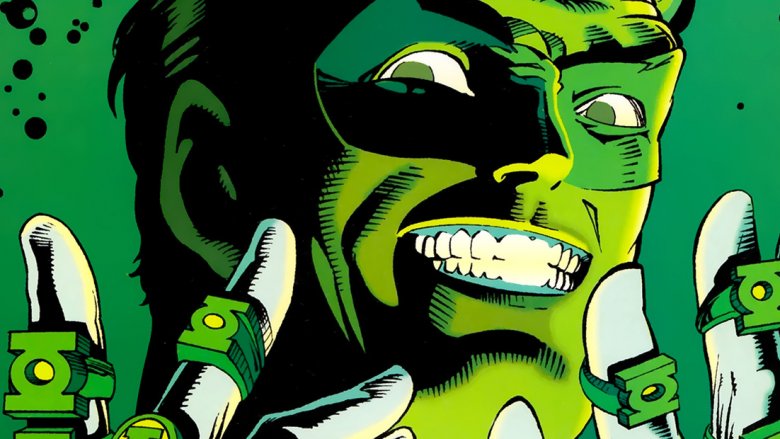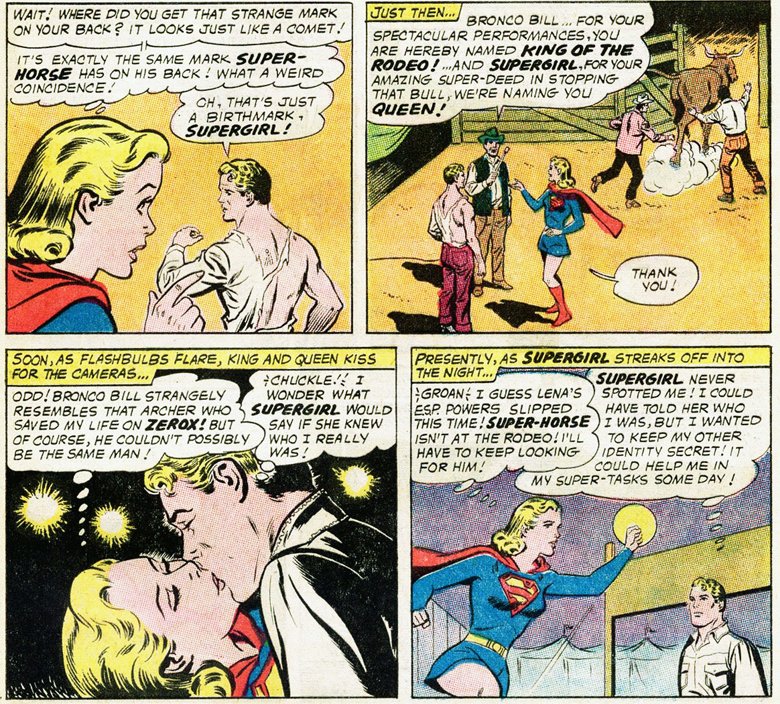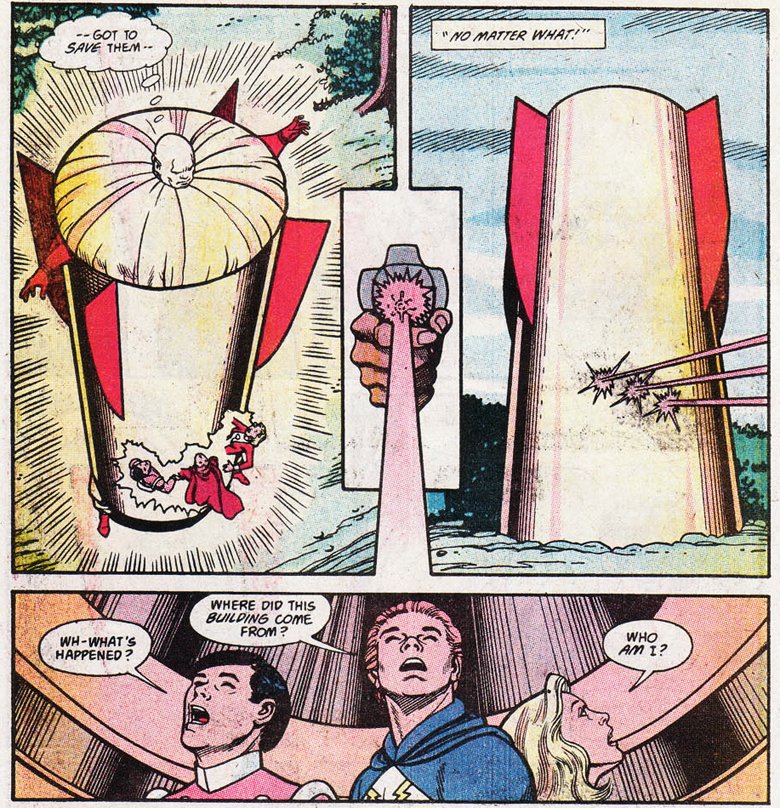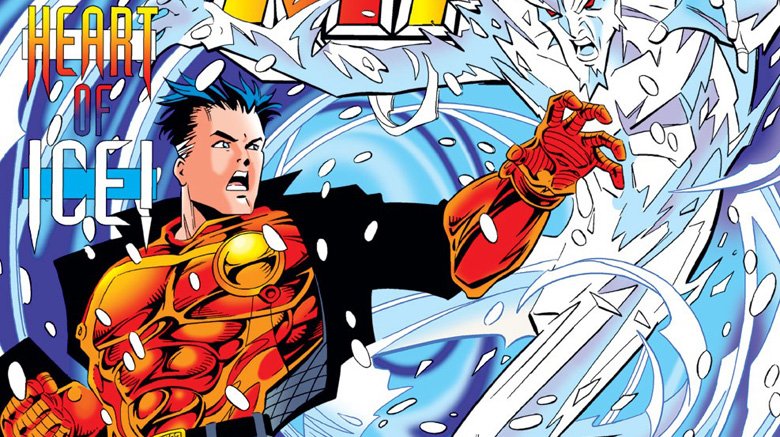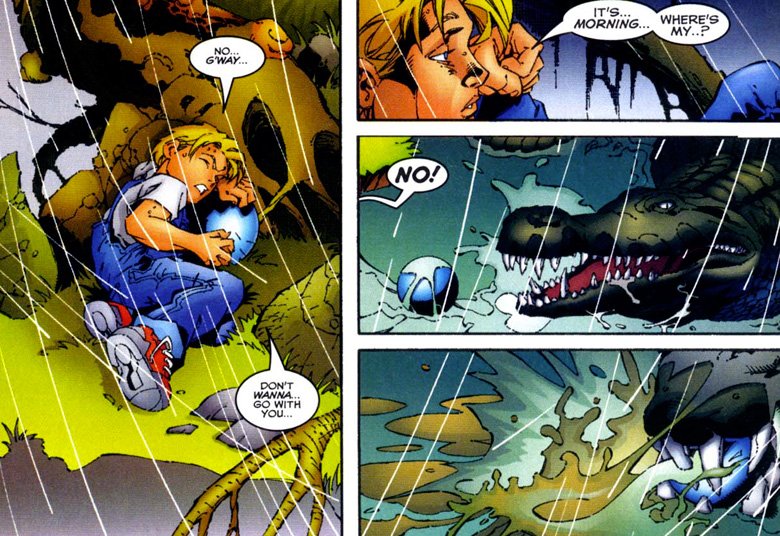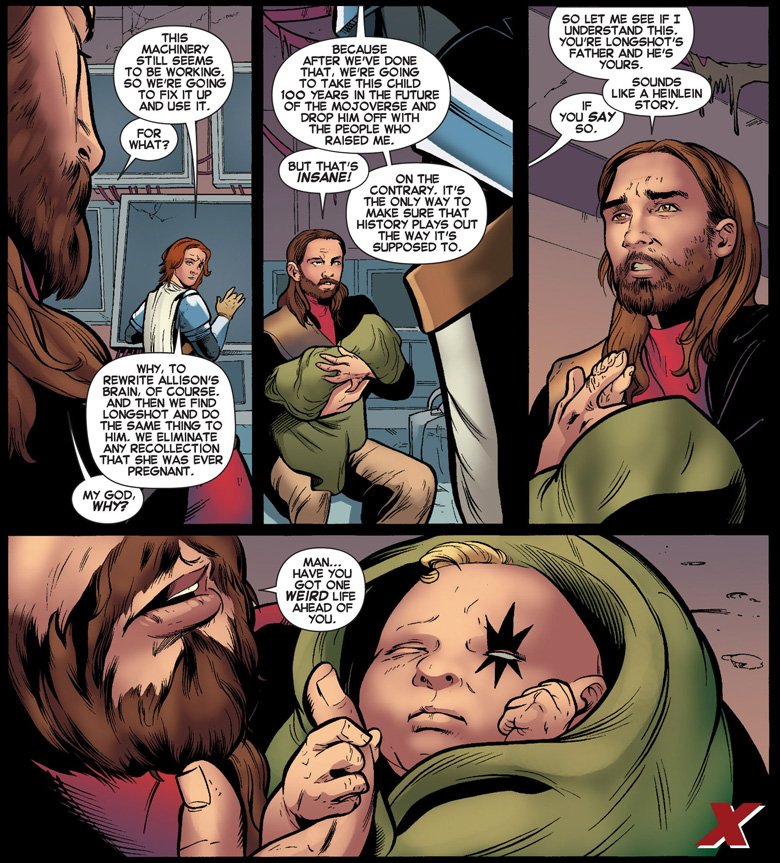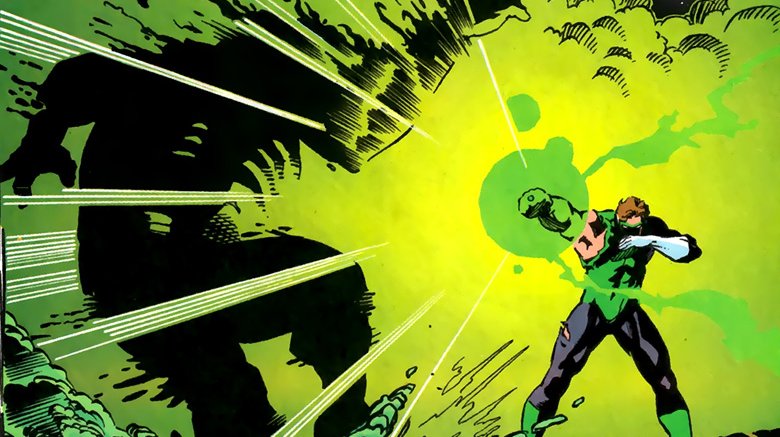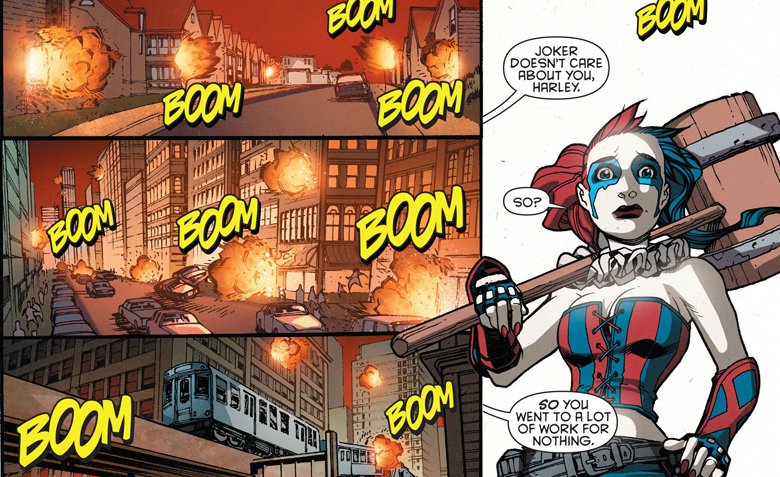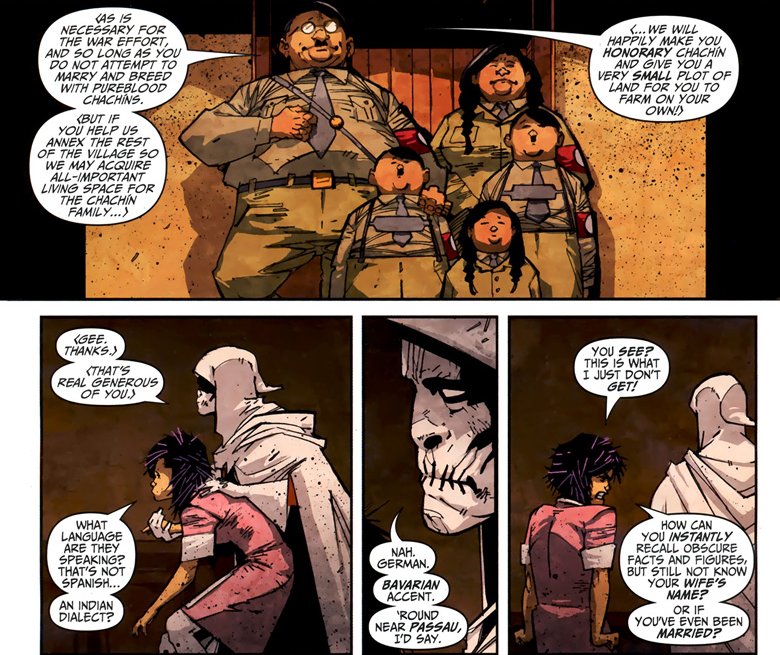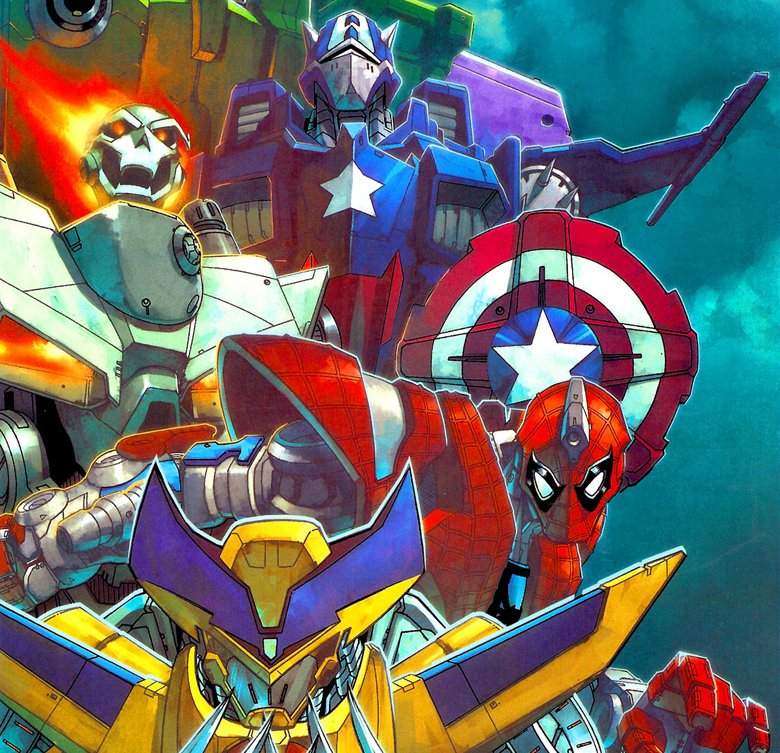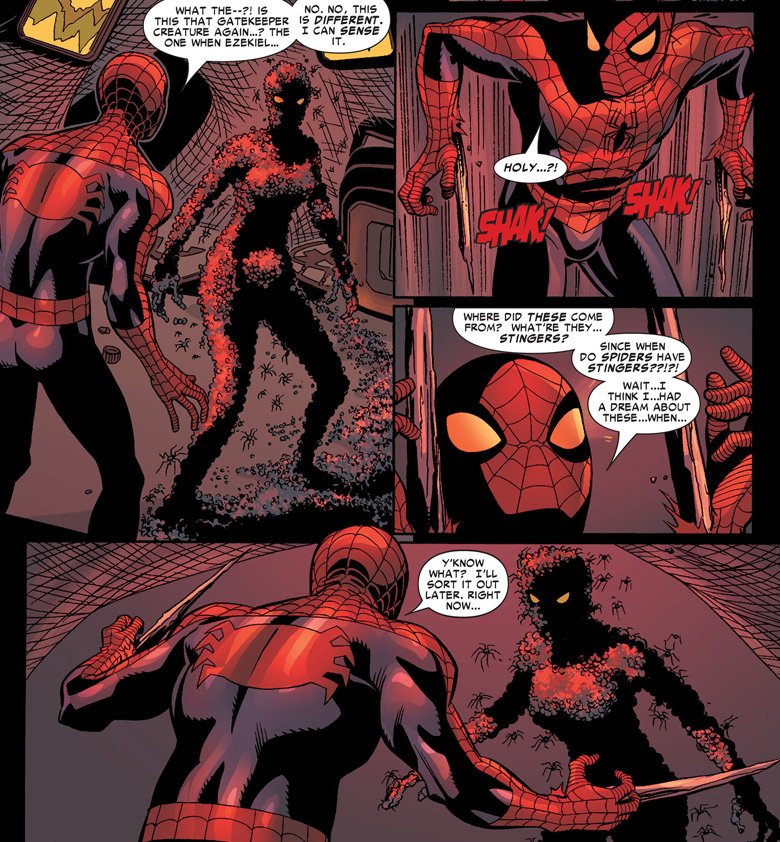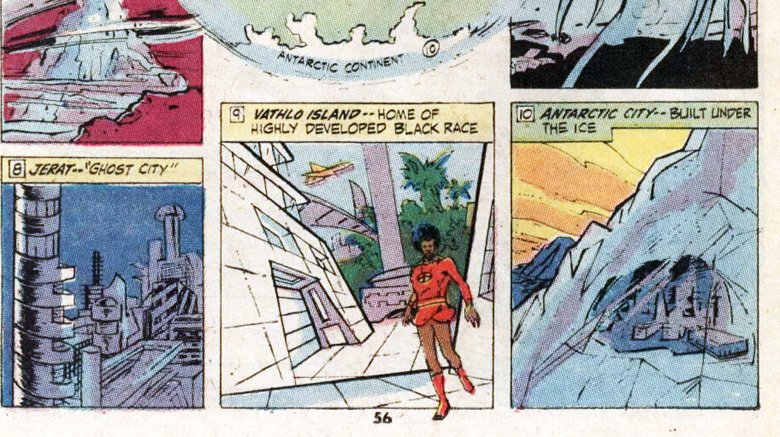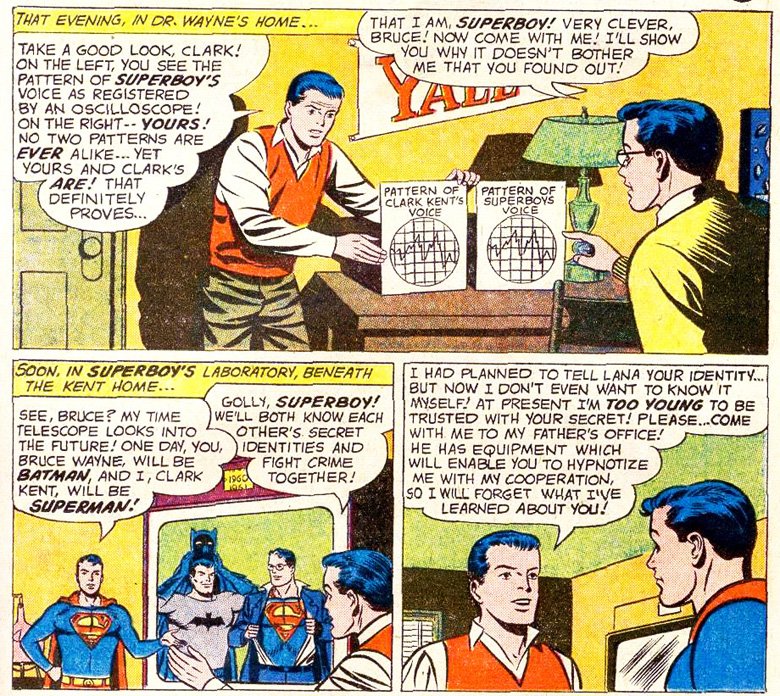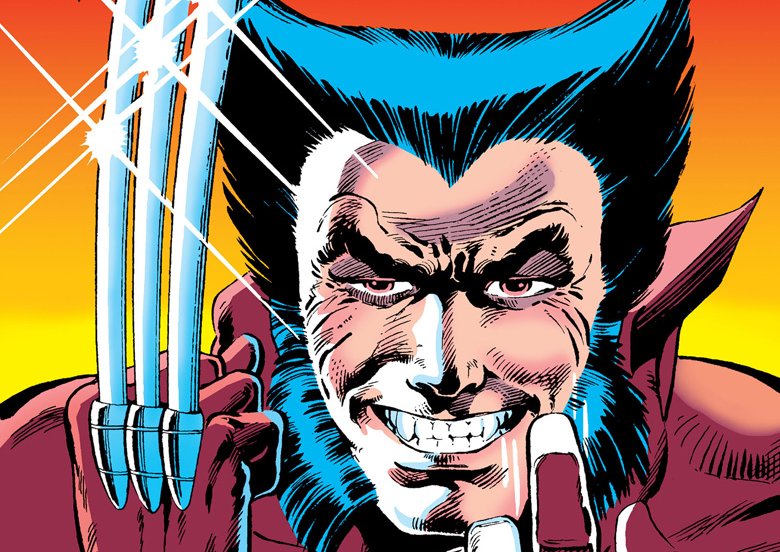The Messed Up Part Of These Superheroes Nobody Ever Talks About
Superhero stories are full of daring action and high stakes, but as you might expect from a genre built around a super-strong alien reporter who fools his best friends by putting on a tie and a pair of glasses, it doesn't take a lot of digging to find comics where things get weird. We're not just talking about the villains, either — you expect them to be involved in some pretty messed-up situations. Read enough of these things, and you'll find that the heroes can be every bit as disturbing.
From Superboy losing his virginity to a time loop that reduced a family tree to a straight line, there's a lot of stuff we just don't talk about ... until now.
How Superboy became a man
Before he moved to Metropolis and started fighting evil as an adult, Clark Kent patrolled the skies of Smallville as a kid, which raises the question of when he officially made the switch from Superboy to Superman. Was it when he turned 18? When he went to college? When he moved out of his parents' house and got a place in the big city? No. It was when he lost his virginity to a woman who had been brainwashed by a robot teacher from space that his dad made. Obviously.
The story was told in 1977's DC Super Stars #12, in one of a handful of stories about Teacher, a Kryptonian robot that was meant to guide little Kal-El and make sure he knew about his home planet. This time, though, it went way too far by roping in Misty, a classmate of Clark's. Thanks to the robot's meddling, Misty was able to figure out Clark's secret identity, revealing her discovery right before they shared a passionate embrace ... which led to the next panel, where Ma and Pa Kent mention that Clark's bed hadn't been slept in the night before. It turned out that the entire thing was orchestrated by the Teacher to find out what would happen if Clark had to watch someone he loved die in front of him, which in Misty's case happened when she was brained with a rock thrown by a sasquatch. Classic teaching method. Clark managed to avoid the temptation to take revenge on Bigfoot, and the Teacher determined that he was ready to be called a man.
The good news is that Misty's death was faked, but the bad news is that she was essentially being mind-controlled through the whole relationship and her long night with Clark. Once the Teacher had no more need of her, he erased her memory and sent her on her way. Readers weren't quite so lucky, but needless to say, this story was never mentioned again.
Supergirl dated a horse
Clark Kent's not the only member of his family to have bad luck in romance, but at least Misty was a biped. His cousin Kara, better known as Supergirl, wasn't even that lucky.
In Action Comics #301, Supergirl met "Bronco" Bill Starr, a rodeo rider so skilled that, in Supergirl's words, he was "almost part of the horse." Which part, we'll leave for you to decide. See, despite the fact that they had a brief but passionate romance, "Bill" wasn't Bill at all — he was actually Supergirl's pet horse, Comet, who had been turned into a human thanks to a magical curse that caused him to basically reverse-werewolf himself whenever a particular comet passed through the solar system.
And just to add another weird layer to it, Comet wasn't actually Comet — he wasn't even really a horse! Instead, he was a centaur named Biron who had been exiled to space back in Hercules' time and cursed to become a super-strong magical flying horse by Circe, whom you may remember from school. The thing is, he never tells Supergirl about his Bronco Bill identity, instead keeping it a secret so he can date her for a few days before turning back into an animal, leaving her none the wiser. And they let him into the Legion of Super-Heroes.
The Legion of Super-Heroes lived inside a person
Not that the Legion's standards for membership were all that rigorous. If anything, the qualifications for who got to join the 30th-century teenage super-team seemed pretty arbitrary, which is actually exactly what you'd expect from a bunch of teens deciding who got to be in their special club. In fact, every time they held auditions for new members, they wound up rejecting a handful of wannabes, which happened so much that the kind-hearted rejects were able to form their own club of "Substitute Heroes" to fight the ones who were more bitter about it.
And the weirdest reject of all made his first and only appearance — as a living, sentient being, anyway — in the pages of Secret Origins #46. That issue is mostly known for featuring Arm-Fall-Off Boy (who does exactly what you think), but it also introduced an erstwhile applicant called Fortress Lad. He had the ability to turn into a giant metal fortress and was rejected because the Legionnaires didn't think he'd be that useful. They were wrong, though — when another reject erased their memories and threatened to blow them away with a laser pistol, he protected them.
And here's where it gets disturbing. The villain of the story wound up erasing Fortress Lad's memory completely, leaving his mind completely blank and unable to turn himself back into his human form — and then she died before she could restore the Legionnaires' memories of the other applicants. The Legion just assumed they'd found a new clubhouse, and promptly started making renovations inside something that had once been — and still was — a living being who only wanted to protect them.
Teen Tony
Speaking of teenagers and regrettable actions, we'd be remiss to not mention that Tony Stark traveled through time as a teenager to replace his older self after the elder Tony was mind-controlled into becoming a murderer. What followed was a perfectly logical series of events that saw Tony the Elder shoving his hand through his younger self's chest, then saving his life by hooking him up to the same sort of chestplate that kept his own heart beating, and then sacrificing himself so we could all get a cool new '90s teen version of Iron Man who fought crime while attending high school.
While the move was meant to breathe some new life into the character and entice new readers, it didn't exactly catch on. Teen Tony managed to stick around for only eight issues before he sacrificed himself again. After that, he was reborn — along with the rest of the Avengers and the Fantastic Four — on another version of Earth, and then a year later was re-reborn back in the regular Marvel Universe.
The weirdest part? Neither of those rebirths fully negated the others, meaning that Tony Stark is canonically someone who remembers having three separate childhoods in three different eras. (And you wonder why he drank.) Still, it's nice to know that if Robert Downey Jr. ever gets tired of playing Iron Man in the movies, there's actually precedent for replacing him with one of those kids from Riverdale.
The Heroes Reborn universe is a literal child's plaything
As for why Teen Tony had to sacrifice himself, well, to say that it's complicated is underselling things quite a bit. The short version is that there was a giant monster called Onslaught, made up of a combination of Professor X and Magneto, that was threatening to destroy the world. Since it fed on mutant energy, all of Marvel's non-mutant heroes (except the high-selling Spider-Man) had to stop it and sacrifice their lives in the process. Which, in retrospect, is a pretty accurate metaphor for the rest of the company being steamrolled by the X-Men's overwhelming popularity in the '90s.
The story doesn't end there, though. The heroes were reborn in an event called — wait for it — Heroes Reborn, which took place on a world without mutants and allowed superstar creators Rob Liefeld and Jim Lee to reboot the Avengers, Iron Man, the Hulk, and the Fantastic Four. That still left readers wondering what the in-story reason was for this brand-new Earth, though, and eventually, it was revealed that they'd all been transported to a new miniature universe created by Franklin Richards, a kid who didn't even understand his own reality-altering powers.
And it turned out that he'd actually been carrying around the entire Heroes Reborn universe in the form of a toy ball for the better part of two years. The ball/universe still exists, too, but it's no longer stuck in Franklin Richards' toy box. Instead, after Franklin's carelessness almost caused an entire universe to be eaten by an alligator, it wound up in the possession of godlike beings, who presumably just find themselves whiling away good chunks of eternity by playing a game of cosmic four-square. Just count yourselves lucky that Franklin wasn't really into fidget spinners instead.
Longshot and Shatterstar are a father-son loop
As evidenced by Tony Stark and his three childhoods, comic book continuity can be a pretty tricky thing. As bad as it can get by accident, though, it gets even more disturbing when people make it weird on purpose. Which is how you get Shatterstar being Longshot's father and his son. Yep: it's time travel.
Longshot, introduced in 1985, was an interdimensional refugee from a world where everything was built to satisfy the whims of Mojo, an all-powerful being who ran his home planet like a TV station. Shatterstar, introduced in 1991, was also from Mojoworld, and also 100 years in the future. And if you're already confused, buckle the heck up, because it only gets worse from here. In 1992, there was a story where Dazzler was pregnant with Longshot's child, which was implied to be Shatterstar. But then, in 1995, after Dazzler had been away for a while, Jean Grey said she "didn't sense another life within her," implying that the pregnancy had ended with a miscarriage.
But then, in 2013, Shatterstar was sent back in time to Mojoworld, where he provided the genetic material from which Longshot was cloned, becoming his "father," before jumping forward in time to his own birth as the child of Longshot and Dazzler, after which he wiped his mother's memory and took himself to the future so he could eventually go back in time and become his own grandfather. Comics!
Hal Jordan killed a whole lot of people because of a space bug
Killing off a character can be a pretty tricky thing. Barry Allen, for example, had arguably the best death ever, sacrificing himself to save the entire multiverse in the pages of Crisis on Infinite Earths, paving the way for his longtime sidekick to take over as the Flash — a death so perfect that when he came back from the dead 30 years later, many readers thought it was actually a disservice to the character. But if that's the best-case scenario, Hal Jordan might've gotten the worst.
Not only was he replaced by a brand-new character who had to deal with everyone around him constantly talking about how Hal was the best Green Lantern ever, he also had one of the most brutal heel turns in comics history. After his hometown of Coast City was destroyed by the Cyborg Superman while the genuine article was busy being dead — long story, but you probably already know about how Superman got beat to death by a bone monster in bike shorts that one time — Hal snapped. Driven by a desire to undo the tragedy, he turned on the Green Lantern Corps and went on a murder spree to collect their rings, and then used this power to try rewriting time itself as the supervillain Parallax.
When Jordan returned to his role as Green Lantern — after a bizarre path that saw him sacrificing his life and serving as the undead embodiment of the literal Wrath of God — "Parallax" was retconned into being something other than just a name Hal thought sounded cool when he started serial-murdering his coworkers. Instead, it was now a giant yellow space bug made of fear that possessed Hal in his darkest moments, controlling his actions and somehow avoiding the notice of the actual aspect of the Almighty Himself that had been inhabiting Hal's ghost. With Parallax removed, he was back in action on the side of the good guys, with no one really worrying that maybe a guy who started killing people because a space bug told him to might not be that reliable to begin with.
Harley Quinn murdered dozens of children
Harley Quinn isn't exactly a superhero, but her overwhelming popularity means that over the past 20 years, she's been treated as a protagonist far more often than she's been a straight-up villain. It's easy to see why, too. She's always been characterized as a hopeless romantic whose genuine love for the Joker allowed him to manipulate her, treating her as a pawn in his war against Batman. That makes her an incredibly sympathetic character, and just as much of a victim of the Joker's evil as anyone else.
But while it's easy to identify with someone who followed her heart down the worst possible path, it gets a little more difficult when she starts blowing up children in a large-scale terrorist attack. And in Detective Comics #23.2, that's exactly what she does — without any involvement from the Joker.
After getting out of the Suicide Squad, Harley winds up on a crime spree that finds her blowing up a police station and everyone in it, complete with shell-shocked pedestrians walking by in the chaos as she checks her phone. The real crime, though, comes when she distributes dozens of free video games to the families of Gotham City and then watches without emotion as they explode at her command. All told, there are 19 explosions that happen on the page, and it's implied that there are a lot more. Exploding a couple dozen families makes it pretty hard to sympathize with a character, even if she's meant to be a "bad guy." Which is probably why no one ever mentioned it again.
The town full of Hitlers
The Marvel Universe has a lot of strange locations. The Savage Land, an isolated jungle full of dinosaurs hidden within the ice of Antarctica. Monster Island, a Pacific isle populated entirely with Godzilla-sized kaiju. There's even the Blue Area, a pocket of breathable, Earth-like atmosphere on the Moon. But none of them even come close to being as staggeringly bizarre as Wewelsburg II: The Town That Was Hitler.
One of the more well-known pieces of trivia in the Marvel Universe is that their version of Adolf Hitler was a lot harder to kill than his real-world counterpart. In 1963, the Fantastic Four took on a villain called the Hate-Monger, who turned out to be a clone made by Nazi scientists after they smuggled Hitler's brain to a replica of a German castle they'd built in the Bolivian Andes. What the Fantastic Four didn't discover, however, was that those same scientists had developed a serum that would imprint Hitler's memories onto anyone who ingested it — and in the struggle, it seeped into the local water supply.
In 2010's Taskmaster miniseries, the Marvel Universe returned to Wewelsburg II, only to find that the area's native population had become a town full of Hitlers who were constantly warring with each other and attempting to annex each other's homes. Fortunately, S.H.I.E.L.D. was able to get the situation under control, but if you really want to know what that would be like, there's some "good" news: Twitter still exists.
Tony Stark built giant transforming robots for the Avengers
Not all messed up moments have to be bad ones. That time that Tony Stark built giant robots for the Avengers, for instance, was actually pretty rad.
If you spent a lot of time in toy stores in 2005, you might recall the Marvel Mega Morphs, which were essentially just Transformers meant to look like Marvel superheroes. What you may not know is that there was an entire comic book miniseries that explained their origin. It's not complicated, either: Since he'd had so much luck building a human-sized robot suit, Iron Man decided to build a bunch of giant robots that were powered by superhuman energy, and customized each one for heroes like Spider-Man, Captain America, and Wolverine. The downside? Drs. Doom and Octopus stole his research and built their own mech suits because there's not much point to having one of those if you don't have one to fight.
So here's the messed up part: Tony made one of these suits for the Hulk, meaning that he gave the literal personification of uncontrollable rage a giant tank that could turn into one of the Jaegers from Pacific Rim. He also made one for Ghost Rider, and that dude's a literal demon from Hell. After a four-issue miniseries and a handful of mini-comics that came with the toys, the Mega Morphs were never seen again. So just keep that in mind next time you're reading a comic about any of those characters: Spider-Man could be swinging around in a Megazord to fight the Green Goblin, but alas. He never does.
Spider-Man had bone claws
The giant robot isn't the only extra bit of Spider-Man's crimefighting equipment that's usually overlooked, but it's a lot more fun to talk about than the time he had retractable bone claws in his wrists.
It happened in a story called "The Other," and the short version is that someone figured it would be a cool idea to make one of Marvel's most relatable superheroes into a pawn of cosmic spider gods. He died and came back to life, turned into a giant spider-monster, emerged from a cocoon, left a Peter Parker-shaped husk full of spiders behind, and gained the ability to shoot webs organically, rather than using his old mechanical web shooters. Oh, and he got the "stingers," which were huge pieces of bone that he could use for stabbing people, because hey, if it worked for Wolverine, why not?
Eventually, Peter's powers — which also included a mystical psychic awareness of all spider-related activity in New York, which is bananas — would revert back to normal, leaving his bone claws and fangs mostly forgotten. But to be fair, that did take a literal deal with the devil.
Batman invented a new internet that kinda sucked
The World's Greatest Detective is well-known as a hero who's prepared for any situation, from shark attacks to deathtraps made of crossword puzzles, but it turns out that there are some things that go beyond even Batman's understanding. And one of them is the internet.
After returning from a time-travel adventure where everyone presumed he was dead — again, long story — Bruce Wayne decided to reinvent global information technology. He called it "Internet 3.0," a world-wide web that would be under the protection of Barbara Gordon, the former Batgirl who had reinvented herself as the ultra-hacker known as Oracle, giving her special "cheat codes" and anti-malware technology so they could battle against cyber-crimes. And if that sounds like a bunch of random words from an internet-focused episode of one of those cop shows for old people, well, that's about how it worked out.
It turned out that with his new world of "virtual museums, department stores, or schools," where he could be "playing virtual golf, watching dinosaurs fight, or touring the seven wonders of the world in an airship," Batman basically just invented Second Life about eight years after we had it in the real world. The only big innovation? If you died on Internet 3.0, you died in real life, a fresh, bold and completely original new concept that would surely appeal to consumers. Maybe stick to bat-shaped boomerangs and rocket cars, Bats.
Krypton was highly segregated
One sad fact of comics is that, like a lot of media, they lagged behind in reflecting the real world in a lot of ways. Flip through any old comics from the Silver Age, for example, and you're not likely to see anyone on the page who isn't white. As time went on, creators started diversifying their casts, but in the Superman books, they hit a bizarre snag with a pretty upsetting solution.
The problem was the planet Krypton. While readers had seen plenty of stories set on Superman's home planet before it exploded, the lack of diversity on the page meant that it seemed to be an entire planet of outer-space white people. Rather than just going forward with new stories that would show Krypton as a planet with varied ethnicities that would be similar to Earth's, which seems like a pretty simple solution, the creators came up with an explanation for why we hadn't seen any black Kryptonians: they lived on their own segregated island that we'd never seen before.
Vathlo Island made its first appearance in Superman #239, on a map of Krypton that referred to it as the "home of a highly developed black race." Looking back, it's easy to say that their hearts were in the right place — at the very least, they cleared the extremely low bar of keeping them as advanced scientists like the rest of Superman's people — but as modern-day Superman writer Mark Waid said, the whole thing is "pretty embarrassing." And the worst part? That's not the only time in the Silver Age that "island full of black people separated from the rest of the world" was used as a major plot point.
Superman let Batman's parents die
One of the problems of having a shared universe is that you start to wonder why heroes always seem to fight the same villains instead of switching things up. Superman, for instance, could probably have most of Arkham Asylum's residents locked up about three seconds after they escaped. Heck, considering that he was operating as Superboy back when Batman's parents were murdered, he probably could've prevented the whole thing if he knew it was going to happen. And here's the thing: He totally did know.
In Adventure Comics #275, Thomas Wayne moved to Smallville to work as the town's resident doctor, and brought his son Bruce along with him. Even at that young age, Bruce's knack for fighting crime was evident, and he wound up taking on some bad guys while disguised as "The Flying Fox" — which, of course, is a kind of bat. And rather than dissuading him from such a dangerous hobby, Clark Kent was happy to team up with him ... because his "time telescope" showed him that Bruce grew up to be Batman.
Not only does that mean Superman was perfectly happy to let the Waynes die because it meant he got to have a friendly coworker in the future, the story also ended with him hypnotizing Bruce to erase his memory so he'd forget that his bulletproof pal could've saved him from his tragic origin story.
Wolverine's hair is shaped like his mask
This isn't really messed up in the way that other things on this list are, but Wolverine's hair is the same shape as his mask, and if you actually stop to think about that, it is buck wild. Seriously, if you saw someone take off a baseball cap to reveal a perfectly baseball cap-shaped pile of hair on their head, you would lose your mind. You'd be talking about that for years.
